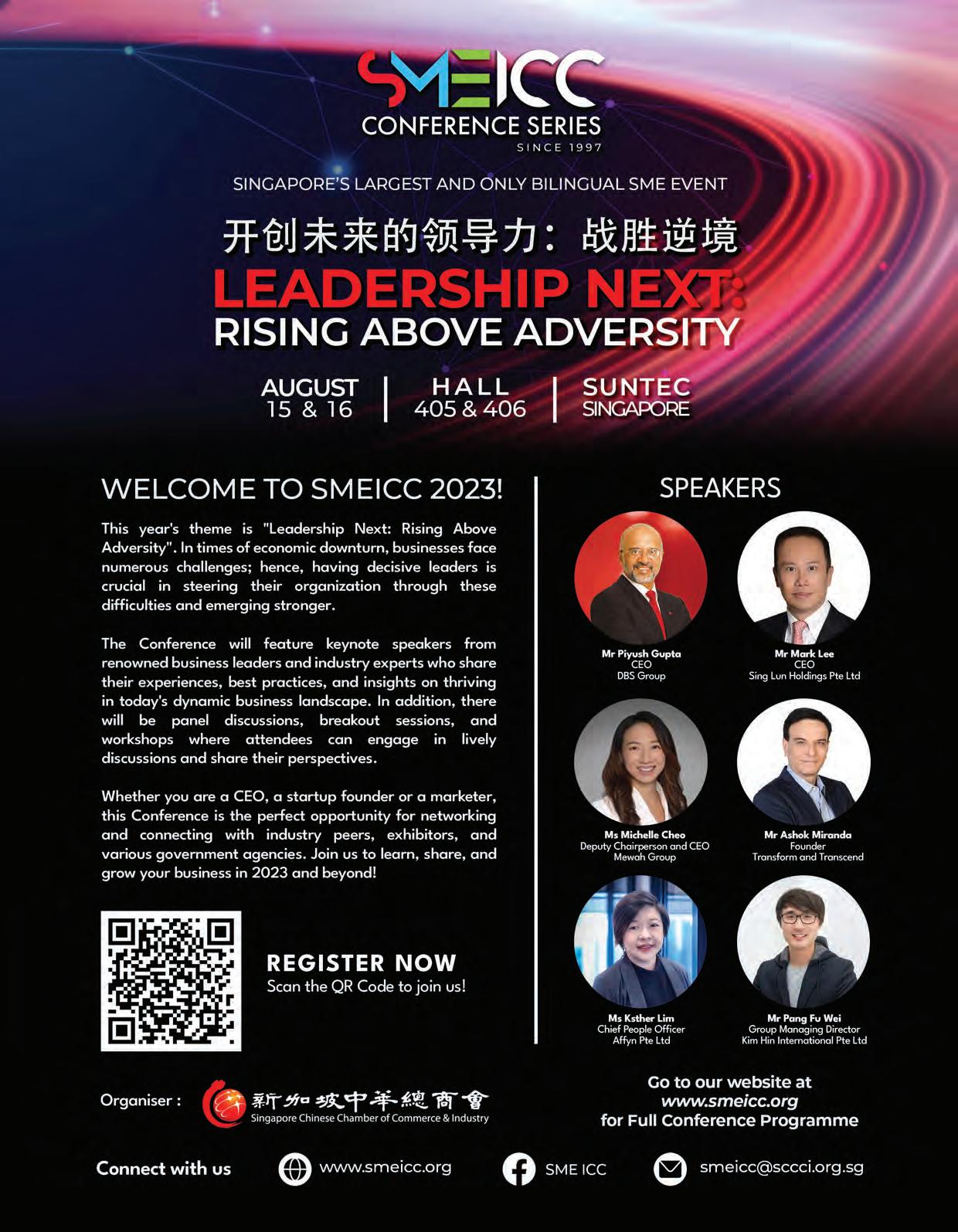CHINESE ENTREPRENEUR
专访许小龙
Interview with Richard Koh Seoh Leng
18
新女性领导力:新思维·新力量·新格局 HER Leadership: New Horizons · Expectations · Resolve



专访许小龙
Interview with Richard Koh Seoh Leng
18
新女性领导力:新思维·新力量·新格局 HER Leadership: New Horizons · Expectations · Resolve






Here's an excellentchance to reach out to thebusinesscommunity at the topthrough SCCCI! We offer you a platform to reach 40,000 memberscomprising of business owners,leaders,successfulCEOs and professionals. On top of this, you can stand to benefitfrom our regionalnetwork. If you have in mindthisrange of target audience, we welcome you to get in touch with us!



编辑顾问 EDITORIAL ADVISORS
高泉庆 Kho Choon Keng
黄亦巧 Hwang Yee Cheau
邬春玲 Voo Choon Ling
出版监督 PUBLICATIONS SUPERVISION
林福有 Lim Hock Yu
主编 CHIEF EDITOR
梁廷昭 Leong Teng Chau
助理编辑 ASSISTANT EDITOR
梁淑雯 New Shu Wen
撰稿 STAFF WRITERS
03 ISSUE 16 / JUL 2023
莊雅晴 Christine Tjong Ya Ching
蔡佩雯 Chua Pei Wen
李胜保 Lee Sin Poh
梁淑雯 New Shu Wen
卓汶錤 Toh Wenqi
行销 MARKETING
黄兆荣 Leonardo Wong
设计 DESIGN
Media Group Pte Ltd
出版 PUBLISHER
新加坡中华总商会
Singapore Chinese Chamber of Commerce & Industry
9 Jurong Town Hall Road
#04-01 Trade Association Hub
Jurong Town Hall Singapore 609431
Tel: (65) 6337 8381
Fax: (65) 6339 0605
E-mail: corporate@sccci.org.sg
Website: www.sccci.org.sg
ChineseEntrepreneuris produced and designed by Media Group Pte Ltd (Registration No. 200105565G) for Singapore Chinese Chamber of Commerce & Industry (Registration No. S61550014E). Copyright of the materials contained in this publication belongs to SCCCI. Nothing in here shall be reproduced in whole or in part without prior written consent of SCCCI and/or Media Group Pte Ltd. The views expressed in Chinese Entrepreneurby authors and contributors are not necessarily those of SCCCI and no liabilities shall be attached thereto. All rights reserved. Editorial enquiries should be directed to the Editor, ChineseEntrepreneur Singapore Chinese Chamber of Commerce & Industry, 9 Jurong Town Hall Road, #04-01, Trade Association Hub, Jurong Town Hall, Singapore 609431. Tel: (65) 6337 8381 Fax: (65) 6339 0605 E-mail: research@ sccci.org.sg. Unsolicited material will not be returned unless accompanied by a self-addressed envelope and sufficient return postage. While every reasonable care will be taken by the Editor, no responsibility is assumed for the return of unsolicited material. MCI (P) 054/04/2023. Printed by KHL Printing Co Pte Ltd (Registration No. 197801823M).
华商人物
Resolve 18
30
热点专题
世界华商大会遇上
百年未有之大变局
China’s Growing Influence on Overseas Chinese Businessmen: Reflections on the 16th WCEC in Bangkok
40 60
电动汽车崛起 车行整装待发 专访新加坡汽车维修业公会
Gearing Up for Electric Cars
Moments 欢迎新会员 Welcome Aboard 65 薪火相传
50
1964年总商会大厦的精神象征
Chinese Entrepreneur (华商) is a bilingual publication. While the publication carries only selected articles in English, we can provide an English translation of the Chinese articles for our readers upon request.

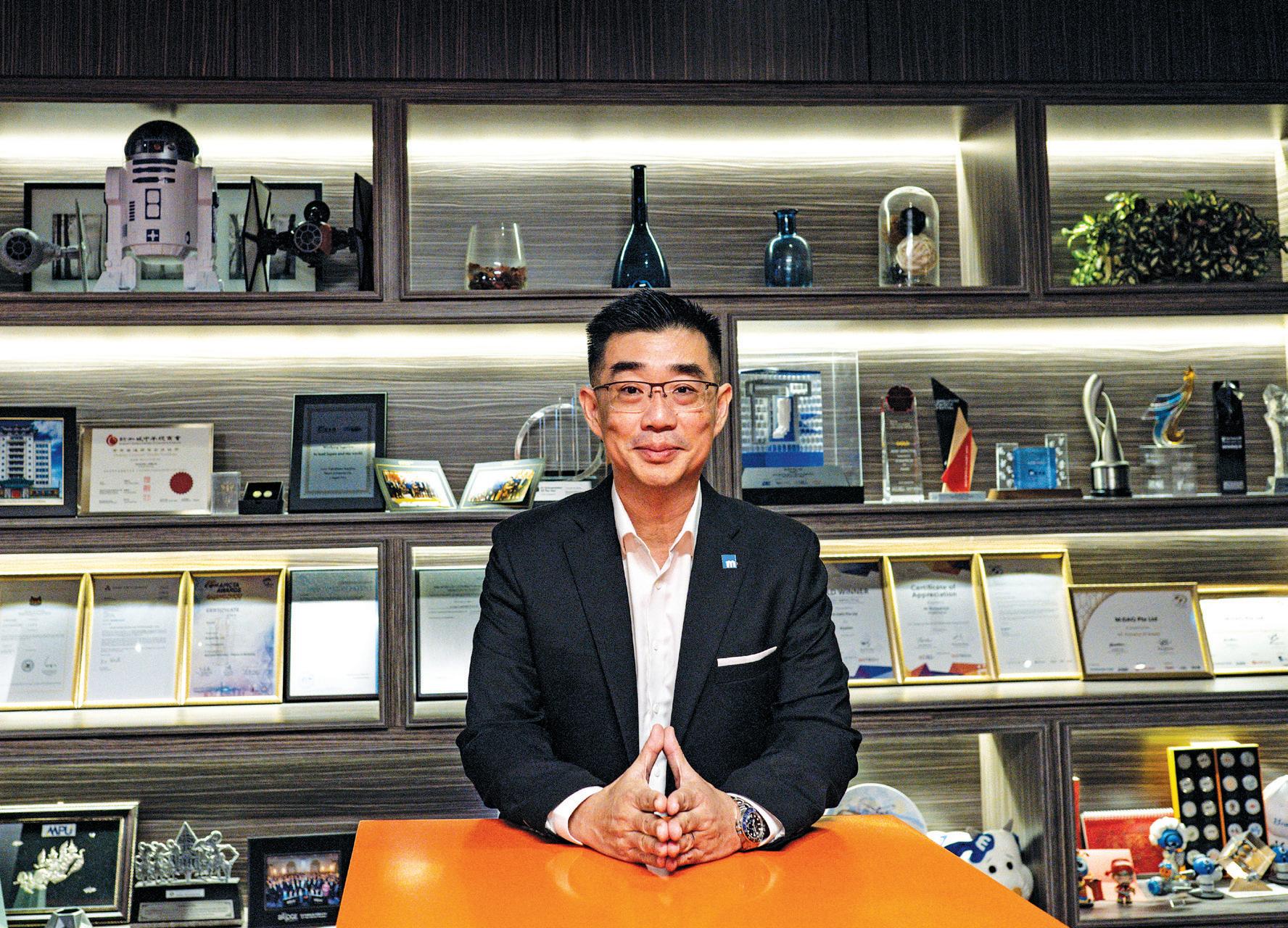
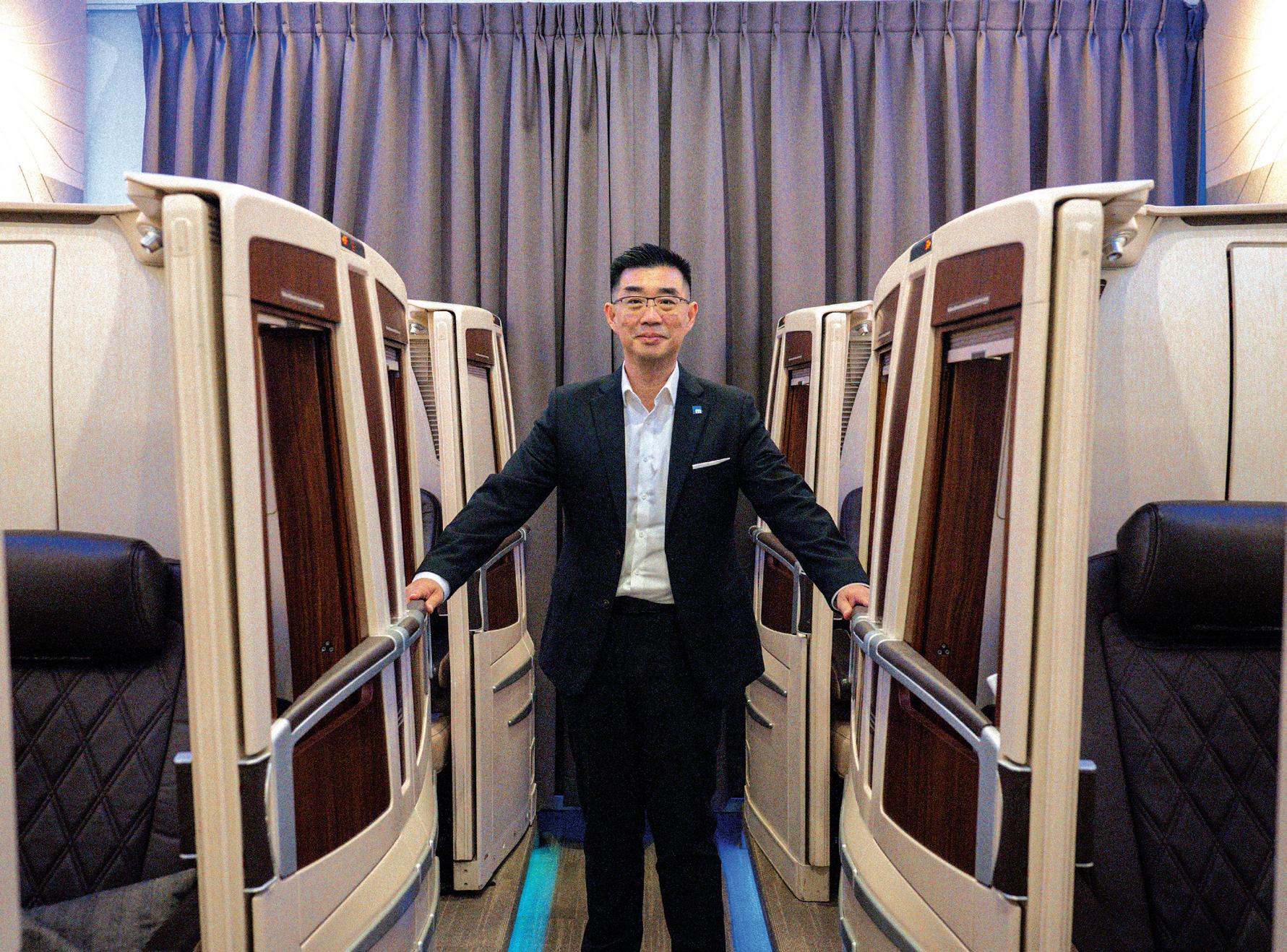

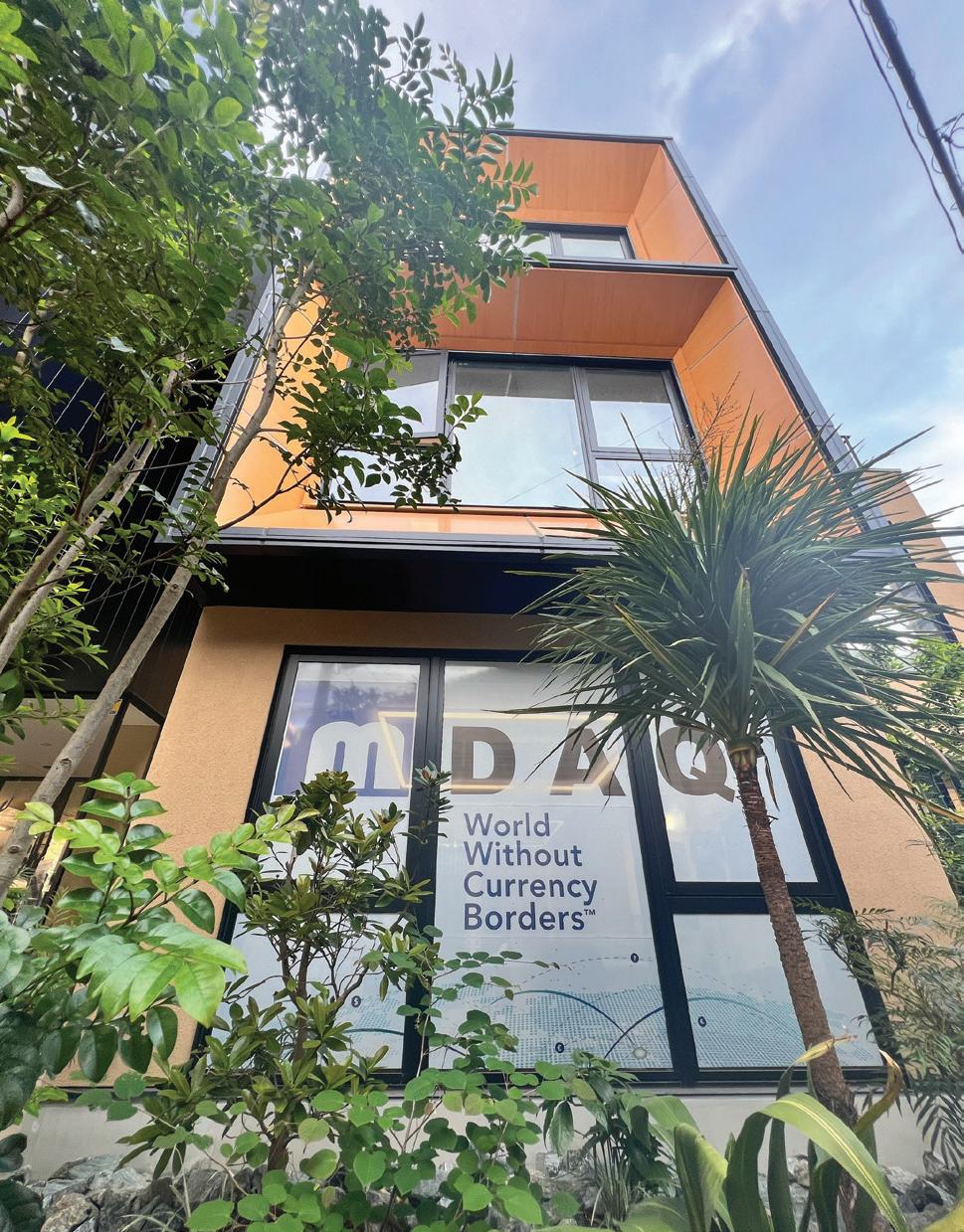






A CELEBRATION OF SCCCI CAREER WOMEN’S GROUP MISSION



The global presence of female leaders has seen a significant increase in recent years. Among them, a great number are driven to excel and accomplish their goals, while they influence and inspire one another along the way. It is not always about the leaders’ strong sense
of status or the ability for decision-making, nor is it tied to their assertiveness or competency to attract followers. A fresh perspective is required to appreciate the energy women bring to their professional and personal lives. In today’s world, these qualities of female leaders have become more apparent day by day: they gracefully pursue high standards, create nurturing environments, display empathy and resilience to forge ahead, and celebrate the success of everyone around them.


“I would not be a better wife, mother, boss, and daughter if I had not dared to dream and had the courage to lead.”
- Michelle Yong
an individual with great fortitude and confidence.
“I would not be a better wife, mother, boss, and daughter if I had not dared to dream and had the courage to lead,” says Michelle Yong, who is the keynote speaker at the International Women’s Day Conference and Dinner organised by the SCCCI Career Women’s Group.
Michelle Yong, the 4th generation leader in the 95-year-old Woh Hup Construction Group as well as the CEO of Aurum Land, which is a strategic diversification of Woh Hup, took the helm of Aurum Land in 2007. She shared on the one thing that got her excited: when she realised that diversification through expansion into adjacent markets and products creates more business units that can be kept within two generations of family business. She has been hoping to circumvent the “third-generation curse”, which is the tendency for family businesses to not last past the third-generation of leadership. Her discovery paved the way for her serial entrepreneurship journey in 2016 and beyond. Today, Michelle looks back at the time of setbacks in her journey, and poses some of these questions, “If I had not started on this entrepreneurial journey, would my relationship with my husband and children be in a better place? Would I personally be in a better place?”
According to Michelle, her answer was “No”. Only with her past experiences is she able to develop into

Last year, she made the difficult decision to end Found8, a coworking-space business. Although she had placed her best foot forward, her reflections made it clear to her that the business was not sustainable. Coming to an end was not an easy decision, but if it wasn’t for the journey, she would not be the person she is today. As she puts it, “I am a better person for it.” she says. Many witnessed her growth in her ability to withstand adversity. Critically, she has also built on her family relationship. “Personally, I have shown my children the importance of grit and resilience and that I am a better wife and mother because I choose to be a business leader, and not in spite of it.”
As she speaks from her wealth of experience, she encourages leaders to regularly review their company’s purpose, vision, and values. Firstly, having a core purpose gives meaning and direction to the work that team members do. “They believe their work would impact the greater good, and they will go further and stay longer for the right reasons,” says Michelle. Secondly, having a vision works as a measure for fulfilling the core purpose, and when broken into smaller targets and goals, provides structure and clarity on roles and contributions. Lastly, the core values are the rules and boundaries that define the company’s culture and can be seen as “the final ‘should’ and ‘shouldn’t’ test for all behaviours and decisions”.
Each leader could have a different definition for success; every trait of a leader has its own merits. For Michelle, she is a leader who has created positive impact on the lives of her customers, team members, and the industry. She stresses two things that make life meaningful: the depth of relationships formed with those around us, and the number of people whom we helped along the way. “Success need not be measured in size, scale, or financial terms, it can also be measured by the impact we have on others. As business leaders, we have the privilege and duty to impact more people more deeply,” says Michelle.
MICHELLE YONG CEO of Aurum Land, CEO and Founder of Core Collectiveutmost importance and this stays unchanged even in today’s digital age.
Although Charmain’s journey of running her own tech firm has not been easy especially for a woman in the tech industry, she has persevered to make a difference. QuickDesk has found its footing with over 900 businesses having chosen QuickDesk to automate their sales processes.
“When I look at the power of technology, I always ask myself how I can achieve more with less,” says Charmain, describing her experience in the tech space as engaging and rewarding.
The CEO and Founder of QuickDesk has built her experiences from the ground up. Her entrepreneurial journey started when she was in university where she invented and sold touchscreen winter gloves. However, her venture did not last when sales slowed down during season change where demand for winter gloves dropped. Although her business did not sustain, her entrepreneurship foray did develop her understanding of what many businesses lack and inspired her current one. Her experience made her keenly aware of how important it is to analyse sales and engage in marketing to boost revenue. She started Quickdesk to help clients increase sales revenue through education and technology. Charmain believes that driving sales is of
The hard truth is that industry gender gap exists, and this is evident in the tech industry where there is a lesser proportion of females, with many employers fervently trying to attract and retain female talents. Charmain shared that the female employees at QuickDesk made up about 40% now, while nine years ago, she was the only lady in the team. “It is pleasing to see that females put more empathy into developing products.” She believes that women would be more deliberate in considering customer base or consumers’ interests, thus creating better products.

From her standpoint, she sees the future of women leadership to be “leaders empowering leaders”. “Having a female community within the company is like a strong support network which makes the workplace a better place to work, as we learn and grow together,” says Charmain. She finds that her younger female employees are set up for success as they are enjoying the work they do and are constantly working towards their goals. When results show, they become bolder and start to express themselves more, taking bigger strides to show their maximum potential at work.
“I have seen change, both in mindset and in the ecosystem,” recounts Charmain. She has observed many females stepping up beyond their full-time jobs to get more things done. “They are demonstrating initiative and are committed to be more impactful by helping others.”
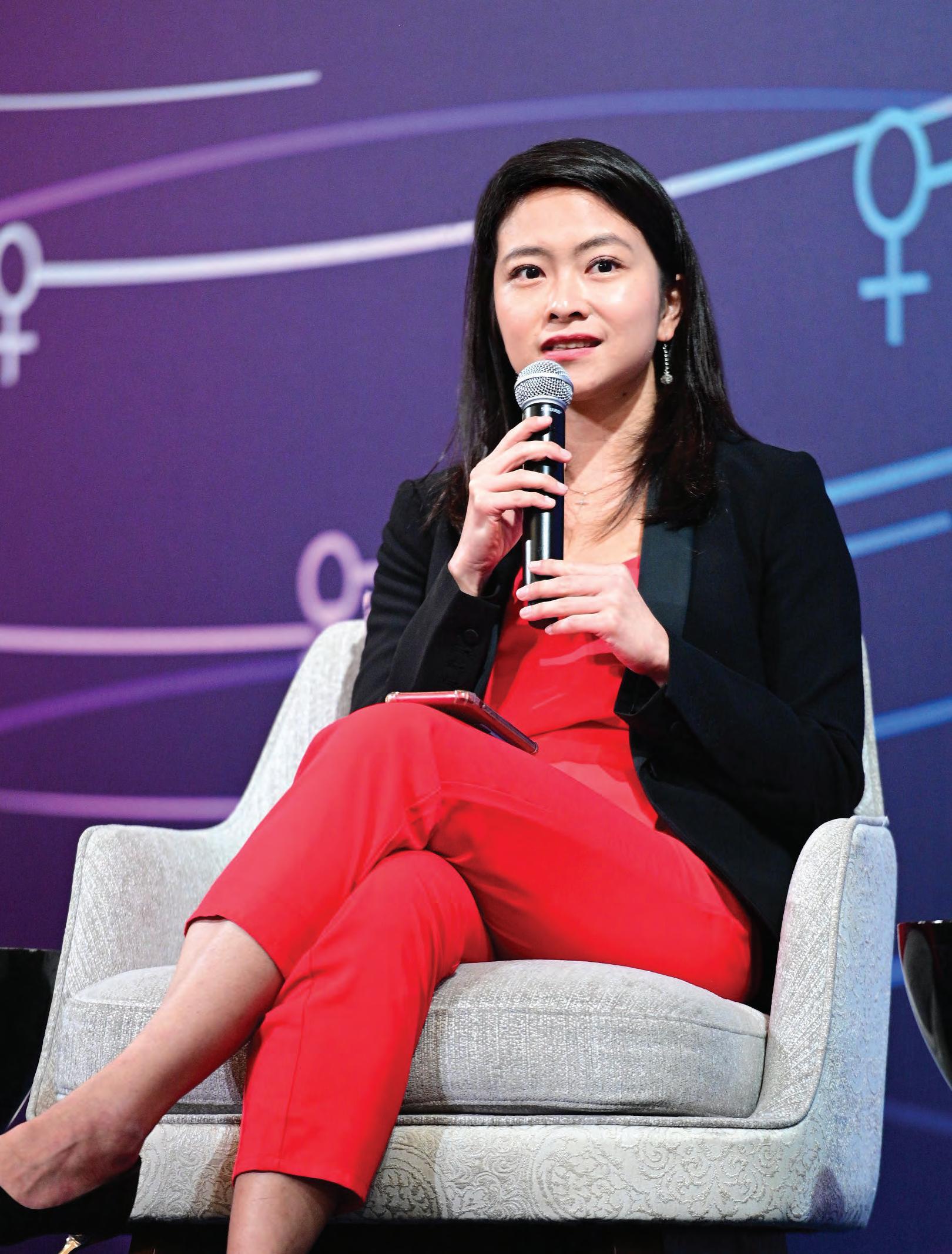
“When I look at the power of technology, I always ask myself how I can achieve more with less.”
- Charmain Tan

“Entrepreneurship is not just about business, the product, or the service. It is also about the people working with you.”
- Jean Yip
 JEAN YIP Group Founder and Chairman, Jean Yip Group
JEAN YIP Group Founder and Chairman, Jean Yip Group
which she describes as “making them believe in what we are doing”, so that both the individual and the company grows together.
She believes women’s empathy can prove highly advantageous in solving problems at work. “Women are keener to hear people out and are able to empathise with them, which is beneficial for resolving issues between multiple parties, or for arriving at a solution that would satisfy everyone.” “In the end, knowing how to solve problems is most crucial when running a business,” she added.
“Entrepreneurship is not just about business, the product, or the service. It is also about the people working with you.” The Group Founder and Chairman of Jean Yip Group believes in shaping the lives of her team members and the people she works with, beginning by integrating them into the company, both in body and in spirit.
We may know Jean Yip Group as a household beauty and wellness brand in Singapore, providing various services to enhance the lives of their customers. However, what the founder of the company, Jean Yip, has revealed, is the company’s strong dedication towards enriching the lives of her team of people who are behind these services.
Jean would engage in understanding her team members’ career goals and develop a genuine interest in their wellbeing. “Being sensitive and emotional are women’s innate strength, and hence they lead human-oriented roles,” she says. Beyond providing a nurturing working environment for her team, she also believes it is important to align their individual values with the company’s,
Apart from offering her team a supportive working environment, Jean does not forget practical incentives. She emphasised that rewarding her team is another important aspect of retaining talents. This also helps to improve employee engagement, motivate teams, and build rapport. “To grow and sustain a business, make them an entrepreneur in your company, share what you have profited and make them feel comfortable.” She believes in leading by example, taking action, and fulfilling the promises she made to the people she works with. Undoubtedly, her beauty empire is established on the cornerstone of mutual growth and trust.
As Jean recaps the values that she holds close to her heart when running the company, it is clear she embodies the versatility that women in business possess. “As you see the people who work with you grow together with you, their lives getting better, your motivation is no longer just about dollars and cents, because you realise you are doing good for yourself and other people.”
 MELISSA KWEE Advisor, National Volunteer and Philanthropy Centre
MELISSA KWEE Advisor, National Volunteer and Philanthropy Centre
team cohesion. Melissa emphasised that not only could women succeed under business context, they are also establishing positive connections, improving the quality of relationships, and creating a culture of letting others feel supported and valued, even outside of work.
“Everyone is not always perfect. One thing for sure is that people trust real leaders, and so being real is important,” says Melissa Kwee, Advisor for the National Volunteer and Philanthropy Centre.
Today, more people are applauding the courage of females who are taking on leadership roles. Melissa believes that female leaders can be one of two types of people – someone who can see the big picture or someone who is detail-oriented, and in both types, they have their place in a team or organisation. “There is so much practical wisdom coming from them,” says Melissa. After all, as leaders, they have the capacity to assume a broad range of roles to facilitate projects and handle situations.
Relationship-building could be the very thing women do well both in the office and at home. At work, people trust leaders to be able to embrace change in a short amount of time. Leaders are present to manage vulnerabilities, help navigate through challenges, and build
She finds that having empathy would get the ball rolling in many relationships and once acquired, it is the most indispensable human skill that would follow someone through their life. Whenever leaders invest their time to be in direct contact with others and respond to their needs with compassion, social connections will be formed. In the space of the “social” elements of ESG, Melissa hopes to support and build inclusive workplaces as well as appreciate people with different skills.
Furthermore, she highlights that people should work and progress together in society as much as possible. In championing leadership, she advises those who lead to learn and explore what people around them can do by identifying their talents and then partner those who have complementary strengths. This will involve everyone meaningfully and deliver results. She brought up the example of the Israeli Army Unit recruiting teens who are on the autism spectrum and how these teens can be assets to the team as they complete specialised tasks.
For Melissa, she was unstinting in her advocacy of leadership education for young women. She believes that women can pick up and develop leadership skills quickly, and their values and purpose can guide them to think and act on the unthinkable, the benefits of which can reach people over a long period of time. “Think about the areas you can influence and inspire your family, community and country, and how you can live that up,” says Melissa.
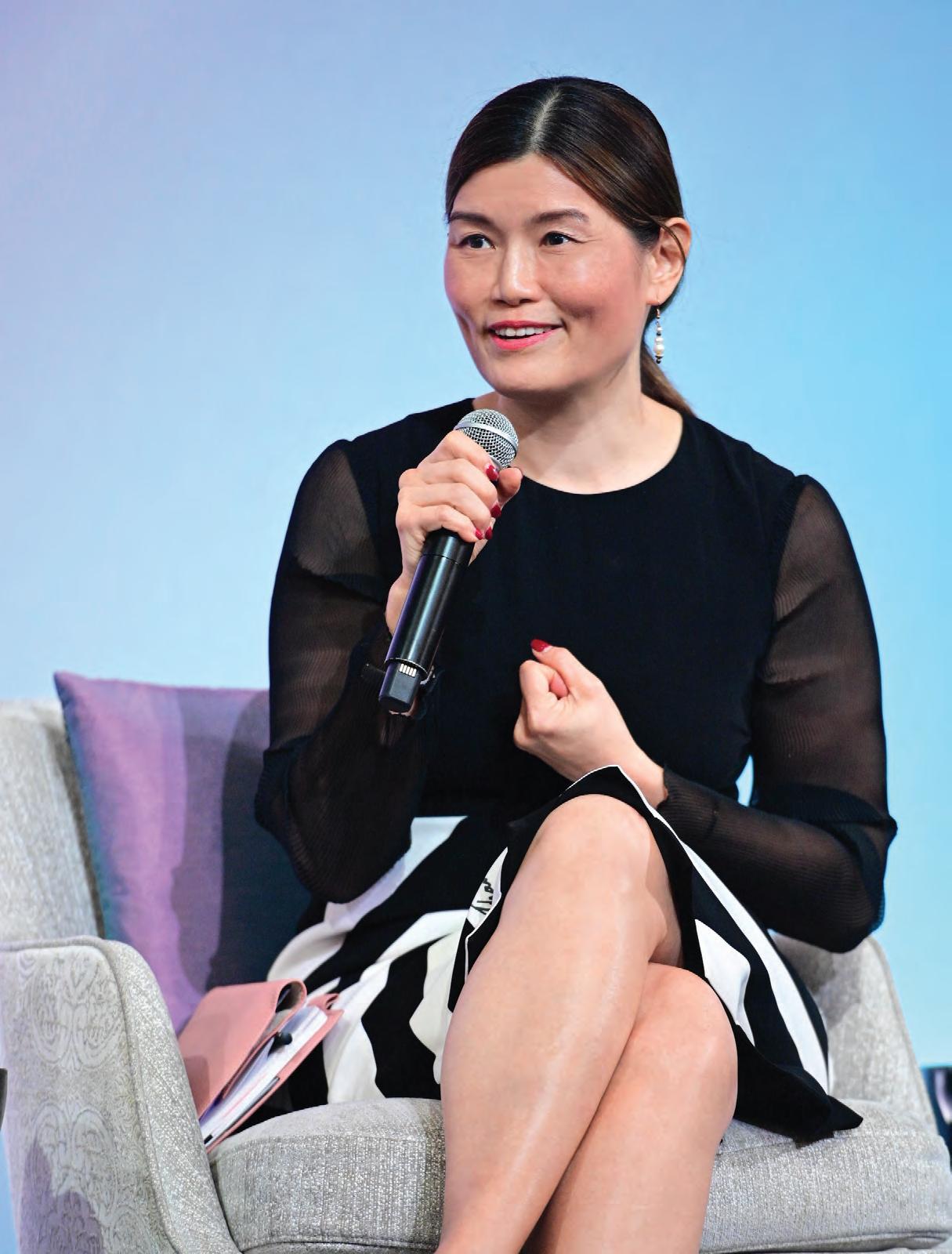
“Everyone is not always perfect. One thing for sure is that people trust real leaders, and so being real is important.”
- Melissa Kwee


“Don’t be afraid to ask for sponsorship – that is, someone who promotes your progression, whether in an organisation or in society, who actively searches for bigger roles for you to fill and gives you the room to run them.”
- Tan Su Shan
term gains are sometimes essential. Of course, women play a crucial role. “Whether in the board room or in an execution team, women and men can work together with different views, strategies, and tactical moves, but be bound by one good long-term strategic goal.”
In an organisation, what constitutes its heartbeat is a shared sense of purpose and values. Tan Su Shan, the Group Head of Institutional Banking at DBS, believes women are great at integrating people in a company as it is their unique strength to bind people through common values and purpose. “It is both diversity and agility that women bring to the table.”
As a firm believer in mentorship, she encourages women to embrace their own strengths as well as shortcomings and take the reins of their own professional development. Together with like-minded women, Su Shan founded the Financial Women’s Association (FWA) Singapore in 2001 as a platform for women to establish mentorship networks in the financial industry. “Don’t be afraid to ask for sponsorship – that is, someone who promotes your progression, whether in an organisation or in society, who actively searches for bigger roles for you to fill and gives you the room to run them.”
When addressing today’s challenges for businesses vis-à-vis sustainability, digital disruption, war, and inflation issues, Su Shan says that forgoing short-term returns for long-
Su Shan believes that companies’ good returns and positive market performances are as important as the focus on ESG. “There are many women dedicated to ESG today, who have put their whole hearts into ensuring that businesses do good and perform well, but I don’t think that beats not being financially sustainable.” She added that one way is for stakeholders to look into reallocating capital, such as through carbon taxes and carbon credits, to ensure that the externalities of nonESG efforts are calculated and factored into return of equity and return of capital.
On the topic of women’s presence in key managerial positions and the progress towards gender equality, Su Shan encourages both men and women to look at data to quantify the existing biasness and gaps that have yet to be eradicated. At the same time, she gave a shout-out to the women who entered key positions in the past few years as shown through the percentage increase highlighted in recent research.
As more training opportunities and platforms become available to women, women themselves need to embolden their own strides. “It is that ‘imposter syndrome’ that we sometimes have in our heads. We doubt if we can do something, the thing is, well, you don’t have to do it by yourself, sometimes it is okay to ask for help.”
Su Shan also urges women to be more vocal of their own achievements, especially towards people who matter. “We may think our results speak for themselves, but many a times, your boss might not know if you don’t tell them.”



Lee Huay Leng, editor-in-chief of SPH’s Chinese Media Group, notes that she seems to have witnessed a shift in focus while attending the recent World Chinese Entrepreneurs Convention in Bangkok — while earlier editions were targeted at bringing together ethnic Chinese businessmen scattered around the world, a changed world seems to have made the latest edition more China-centric, and it remains to be seen whether this will hold for future editions.
LEE HUAY LENG Editor-in-Chief, Chinese Media Group, SPH Media
While attending a panel discussion on “Business Philosophy and Management Sharing for Chinese Entrepreneurs” at the 16th World Chinese Entrepreneurs Convention (WCEC) held in Bangkok, I sat next to a British gentleman. I asked this “ang moh” (Caucasian, or nonethnic Chinese) why he chose to attend this session, and he explained that he invests in real estate and financial technology in the UK, and has Chinese business partners and wanted to gain a deeper understanding of them.
I noticed that he wasn’t wearing headphones for simultaneous interpretation, and recalled that he mentioned before the session began that he had studied Chinese in Taiwan.
Over two days at the bustling Queen Sirikit National Convention Center, there were few
Caucasians like this British businessman. Apart from the friendly and enthusiastic Thai staff, the majority of the 4,500-plus attendees in the venue were ethnic Chinese, including about 1,800 Thai entrepreneurs and 1,500 people from China.
I spoke with a private entrepreneur from a fifth-tier city in China, who was very interested in the situation abroad. He asked detailed questions, including about external views on China’s domestic economic situation. Besides representatives from various local chambers of commerce and industry in China, there were approximately 1,200 “overseas businessmen” attending the conference, including new immigrants from China to North America, Europe, the Middle East, Latin America, Southeast Asia, Australia, as well as ethnic Chinese who have settled in Southeast Asia for several generations.

Attendees at the 16th World Chinese Entrepreneurs Convention (WCEC) held in Bangkok, 25 June 2023.

(SPH Media)
The welcome dinner and opening ceremony mainly featured speeches by representatives from the host country and several Chinese officials. The national anthems of both countries were played; it felt like a ThailandChina bilateral event. At the opening ceremony, with rows of sofas in the front and tables and chairs arranged behind them, I felt like I was at a conference in a Chinese city.
Like some other global Chinese organisations (such as The Chinese Language Press Institute), the WCEC was initially founded with the aim of being “Chinese” but not exclusively “Chinese” — highlighting Chinese values and being concerned with
China’s development, while also maintaining an appropriate distance from the Chinese government. The format and agenda of the conference are not influenced by Chinese “guidance”.
Speaking at the WCEC opening ceremony, Kho Choon Keng — president of the Singapore Chinese Chamber of Commerce & Industry — talked about the reasons for the event’s success over the years, going back to its original intention of creating a non-political platform to bring together ethnic Chinese businessmen scattered around the world, strengthening economic cooperation, and promoting mutual understanding.
The event was organised by the Singapore Chinese Chamber of Commerce & Industry in August 1991, and the Founding Members
At the opening ceremony, with rows of sofas in the front and tables and chairs arranged behind them, I felt like I was at a conference in a Chinese city.
Board was established in 1993, including the Chinese chambers of commerce in Hong Kong, Thailand, and Singapore. In 1999, the Secretariat was established to “ensure the continued coordination and planning of the biennial WCEC”.
Looking at the previous years’ programmes, besides leaders of the host country and leading entrepreneurs, the WCEC also invites outstanding Chinese scholars to deliver speeches on technology, society, culture, and
history, showcasing openness and diversity. Professor Chang-Lin Tien, former chancellor of the University of California, Berkeley, Professor Tu Weiming from Harvard University, and Rong Yiren, former chairman of China International Trust and Investment Corporation and vice-chairman of the standing committee of the 7th National People Congress, were all headliners at the first WCEC. Singapore’s founding Prime Minister Lee Kuan Yew was also a strong supporter, speaking at the first WCEC

and attending subsequent sessions in Hong Kong, Canada, and Australia. Notable figures who have shared their wisdom at the congress include historian Wang Gungwu, economist Wu Jinglian, Lenovo founder Liu Chuanzhi, and Acer Group co-founder Stan Shih.
When the WCEC was held in Nanjing in 2001, as the host country, China showed its charm by offering full support while showing the utmost respect for the WCEC. Chinese Premier Zhu Rongji, chairman of the National Committee of the Chinese People’s Political Consultative Conference Li Ruihuan, Vice
Premier Qian Qichen, Minister of Foreign Trade and Economic Cooperation Shi Guangsheng, and Governor of the People’s Bank of China Dai Xianglong all participated, sharing insights on this platform alongside other Chinese businessmen from countries and regions such as the US, France, Australia, Hong Kong, and Taiwan. Vice-Premier Liu He, who has just stepped down as vice-premier, gave a speech at the time about “The Dependencies and Real Challenges of China’s New Economic Development” in his capacity as executive deputy director of the State Information Center.
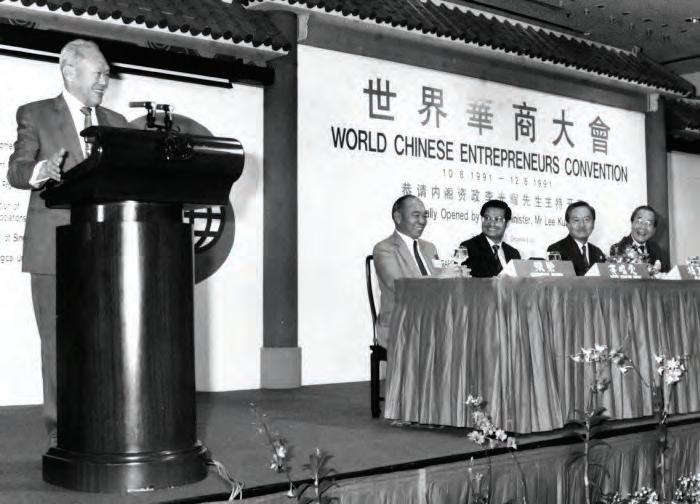
After 32 years, both the global situation and original intention of the WCEC have changed significantly. Dhanin Chearavanont, senior chairman of Thailand’s Charoen Pokphand, said at the opening ceremony that Japan’s past investments and technical assistance to Southeast Asia, especially Thailand, have contributed to Thailand’s economic success today.
However, he also pointed out that China has now become the world’s second-largest economy; its population of 1.4 billion people, along with the total populations of Japan, Korea
and ASEAN, have made the regional market massive and prominent.
Chearavanont, who is also the president of the China Overseas Chinese Entrepreneurs Association, pointed out that China has become a technologically advanced country. At the same time, Chinese President Xi Jinping’s Belt and Road Initiative, which advocates extensive consultation, joint contribution and shared benefits in global governance, and the proposal of a “community with a shared future for mankind”, offers many opportunities that

Chinese entrepreneurs should seize.
The “reality” that Chearavanont mentioned, when put together with Kho’s reminder of the “original intention” of the WCEC, provides much food for thought. In 1991, the world doubted whether China was firmly on the path of reform and opening up. When Singapore’s late founding prime minister Lee Kuan Yew spoke at the convention, he told roughly 800 Chinese entrepreneurs from over 30 countries and 72 cities, “Indeed just by being ourselves, making progress in our lives, Chinese abroad become a powerful pull factor in China’s evolution forward.”
Back then, overseas Chinese were seen as role models. These overseas Chinese businessmen who maintained their Chinese cultural values and managed to integrate into the communities they moved to, and not only that, who made a name for themselves in varied business environments, gaining experience and building up wide contact networks, were a precious
resource for a China that wanted to connect with the world back then.
Today, China’s rapid rise and its massive market have become powerful pull factors. The WCEC was originally dominated by overseas Chinese who left China in the late 19th century and settled down in various parts of the world. While they participated in China’s economic development in the early stages of China’s reform and opening up, China may now be their most important market and even the one they are most reliant on.
Business people are pragmatic people; the relationship between Chinese entrepreneurs and China will certainly be recalibrated. At the same time, Chinese businessmen are talented and entrepreneurs from various parts of China are growing in number; it is only a matter of time before they become the main body of the WCEC. How will these factors change the WCEC?

... Chinese businessmen are talented and entrepreneurs from various parts of China are growing in number; it is only a matter of time before they become the main body of the WCEC. How will these factors change the WCEC?Chinese Chambers at the 16th WCEC gathered as they posed for photographs for media coverage.

Various parties should weigh the value and significance of the WCEC, as well as whether these continue to uphold the word “world” and neutrality in terms of form and agenda...
Kho mentioned the spirit of “harmony in diversity” (和而不同) at the opening ceremony of the WCEC as Chinese entrepreneurs must not only respect and accommodate the differences among Chinese entrepreneurs but also consider the feelings of different communities in their respective countries and societies. This ethos is deeply understood by overseas Chinese but also the least understood.
In chairman of the Chinese People’s Political Consultative Conference Wang Huning’s congratulatory letter to the WCEC, he mentioned that the world was experiencing great changes unseen in a century. Not only that, geopolitical pressure on the commercial economy has risen sharply, the effects of which can be most keenly felt by Chinese entrepreneurs.
Amid the new situation in the new era, if the WCEC continues to promote the spirit of learning from each other and mutual respect among Chinese entrepreneurs, while making
full use of its “unique advantage of being in tune with China and the world” and making good use of its business networks and close relationships with non-Chinese entrepreneurs, this is a plus for China.
Given the strength of its economic power today, it is not difficult for China to lead the WCEC as some Chinese entrepreneurs may even proactively reach out to Chinese officials to “sinicise” the WCEC. Various parties should weigh the value and significance of the WCEC, as well as whether these continue to uphold the word “world” and neutrality in terms of form and agenda, so that the convention displays openness and diversity and wins points for both the WCEC and China. Expertly doing so will require the exceptional wisdom of all parties.
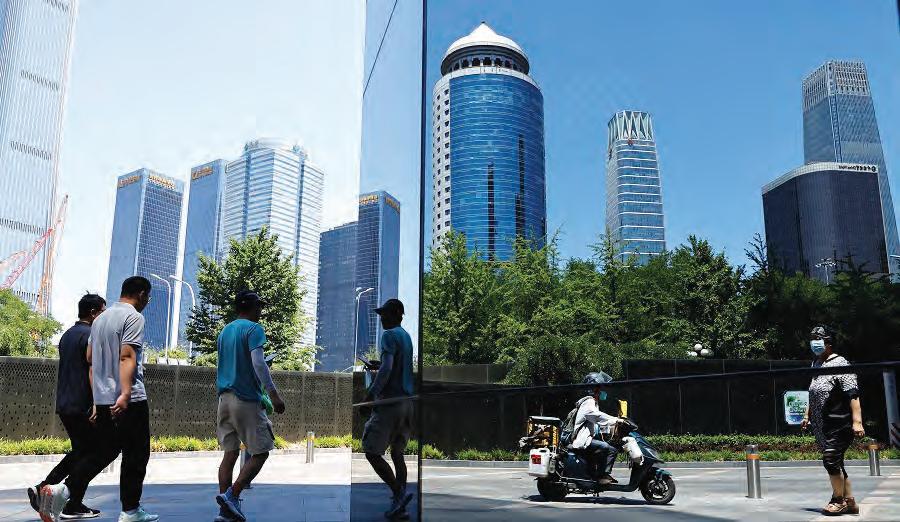











The original Chamber Building Da Fu Di, located at 47 Hill Street, was rebuilt and officiated by the then Founding Prime Minister Lee Kuan Yew on 20 September 1964 – which was the Mid-Autumn Festival that year. 50 years later, the Chamber Building was refurbished in 2017 and reopened in 2022. This building reflects the Singapore's identity, serving as a home for the business community. Let us explore the essence of this new Chamber architecture design in 1964.


Ho Beng Hong (1918 - 1986), who went to study Chinese architecture history under Liu Dunzhen at the Central University in China, was the design architect of the Chamber building in 1964. He infused the Chinese National style and ensembles with 1960s art deco flair. According to Dr Ho Puay Peng’s interview in 2018, the façade is modelled after the best of École des Beaux-Arts architecture, which is distinguished using historic structures, rich decorative detail, and a tendency toward monumental conception. The pigeons are the architect's signature in his adaptive Chinese architecture; they demonstrate his inventiveness in blending Chinese motives with simple lines. He also designed Chung Cheng High School (Main) Administration Building that has the same traditional Chinese design elements as the Chamber building.



The Chamber building is a landmark of the urban landscape in downtown Singapore. The 1964 new Chamber building adapted to the narrow frontage lot because the site of the Chamber building used to be a mansion owned by a local Chinese merchant. The architect designed the building in a “I” shape, where
the front and rear building were wider while having a narrower central body to house the main halls.
The building is symmetrically organised with the main emphasis on the central part that consists of 10-storey building with a balcony on each floor. The roof was topped by a pinnacle of trimmer roof with a Chinese pavilion to demonstrate the Chinese characteristics of the building.
The frontage of the building has a pair of Nine Dragons Relief Walls and stone lions. The architect created a courtyard between the front entrance and the main building instead of bringing the building to the edge of the street. The front wall consists of a main gate and two side gates connected by the Nine Dragons Relief Walls. The symbolism of the red gate with a green roof shows a solemn entry to the building. The whole ensemble has a lovely rhythm and is well-proportioned, facing the street. The front gate is known as the “Mouth of Qi” where energy enters. The Chamber painted the front gate red to create this welcoming energy. Red is also associated with power, happiness, wealth, and honour. The 36 golden nails drilled onto each side of the vermilion-painted gate, are set in five horizontally and seven verticallystrengthening the gate panels.
The roof of the main gate was traditionally designed with one main ridge and four sloping ridges. The historical ornamentation of the main ridge consisted of full ornamentation of dragons biting on the main ridge. However, the architect of the Chamber building chose to simplify the ornamentation to lines, presenting an art-décor flavour. Likewise, the animals presented on the sloping ridge were simplified, symbolising the modernity of the time with simple lines verging
on art deco styles. Flanking the main gate is a pair of auspicious stone lions. The pair of stone lions guarding the main gate are over six feet tall, with a male on the left and female on the right, each featuring a different expression in a lively manner. The lions are from Fujian province, shipped from Amoy to Singapore and
have been with the Chamber since 1964. The Lioness is a symbolic of the Yin, guarding over the people within the building. In the company of two cubs, one beneath a paw and another one hanging on another paw. The lion is symbolic of the Yang, guarding the building. It has one paw placing upon an embroidered ball.


There is a balcony flanking the building at the main entrance of the lobby with its design following the traditional Chinese imperial architecture with the barriers showing the word ruyi. The sides of the pole are designed with three layers of art-décor design topped with a lotus design. The whole assembly is finished with white terrazzo to mimic the white marble in imperial architecture in China. There was veranda on the two sides of the main halls with a row of balusters that were similar to the design of the Chinese imperial palace in Beijing, China. Traditionally, the poles were designed with the dragons coiling up. However, the poles on the veranda were simplified, presenting a cylinder with three blocks. The design of a square and circular shape symbolised the concept of heaven and
earth. Above them, there were spouts to drain water from the canopy in the shape of nine dragons, similar to the design of the Chinese imperial palace. The balcony of the front façade is repeated in every floor of the main building, deriving from the Chinese imperial design. However, the veranda was removed during the 2017 refurbishment.
The pavilion roof has two layers of roofs instead of one layer, while the sloping ridge is designed with five animals as compared to three at the front gate’s roof, signifying the higher status of the architecture. The roof is supported by columns in red topped with brackets that was similar to the Chinese imperial style, except that there were two pigeons flanking on each of the brackets. The green roof pavilion crowning the Chamber building, representing the Chinese characteristics of the building.

The completion of the new Chamber building in 1964 showed that local Chinese had put their lot in Singapore. It was also integrated with the essence of both Oriental and Western architectural styles.
The completion of the new Chamber building in 1964 showed that local Chinese had put their lot in Singapore. It was also integrated with the essence of both Oriental and

Western architectural styles. The Chamber building became the “home” of the local business community, uniting businesses. After Singapore gained independence in 1965, the Chamber shouldered an even greater responsibility in complementing the government’s efforts in nation-building and leading the local Chinese businesses to build a better future for our country.
After its refurbishment in 2022, the Chamber building continues to serve as the home of the local businesses, allowing the Council of the Chamber to support and complement the government’s policies in protecting the interests of businesses and Chinese community, actively promoting the development of commerce and industry and supporting cultural and educational activities as well as community services in Singapore.


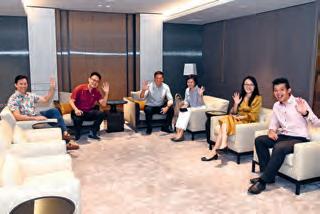
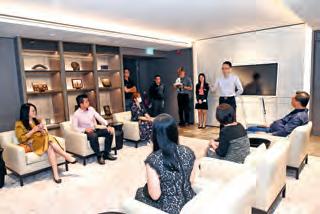



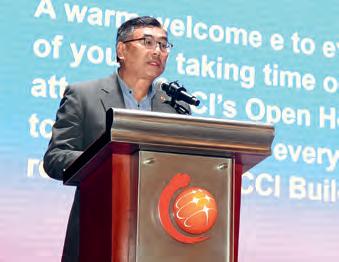


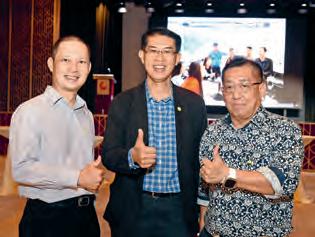









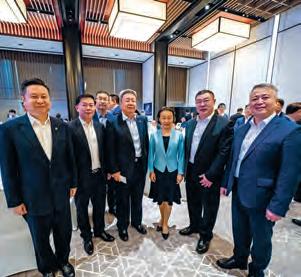







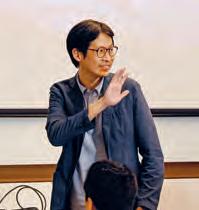
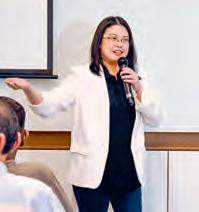
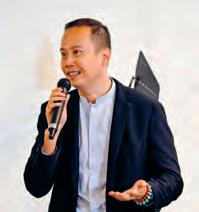
ABACARE SINGAPORE PTE LTD
ANNA VANESSA HAOTANTO
ARRI ASIA PTE LTD
ARTUALIZE PTE LTD
AURIONPRO PAYMENT SOLUTIONS PTE LTD
AXIOM IT SOLUTIONS PTE LTD
BON EVENTS LLP
BRC GLOBAL ROLLS PTE LTD
CHAI YANG
CHIA LAI LENG ANGELINE
CONTIGO LAW LLC
CP RESIDENCES PRIVATE LIMITED
CRAYON PTE LTD
DECLARATORS PTE LTD
GEOPOST SOUTHEAST ASIA (SEA) PTE LTD
GEORGINA CHUNG
GHK FOOD PTE LTD
GLOBAL ALLIANCE LOGISTICS PTE LTD
GOH CHUN HWEE RYAN
GUI SOLUTIONS PTE LTD
H WORLD HOLDINGS SINGAPORE PTE LTD
H2MO PTE LTD
HO MEI QI VANESSA
HO SUE SHEN EVELYN
IGREEN HERO PTE LTD
JA MITSUI LEASING SINGAPORE PTE. LTD.
JIWA INDUSTRIES PTE LTD
KIM SOON LEE PTE LTD
KOK SIAK CHIN KAREN
KONG WAI WAH ANDY
KUMARI NAHAPPAN
LEE SWEE SER
LIANGZUO STUDIO PRIVATE LIMITED
LION TCR PTE LTD
LIU NANQI
MENCAST HOLDINGS LTD
MHC MEDICAL NETWORK PTE LTD
MONITORING SOLUTION PROVIDERS PTE LTD
NGAI SEW CHYIT NORMAN
NGARDE VENTURES PTE LTD
ONG WEI PENG CLAUDIA
OOI INN CHEQ VERONICA
PAYBOY PTE LTD
PLAN B STUDIO PTE LTD
QUANTUM HEALTHCARE LIMITED
REN HAIBO
RMA CONTRACTS PTE LTD
RT LLP
SANGFOR TECHNOLOGIES (SINGAPORE) PTE LTD
SHI DAZHAN
SIHAITONG HOLDINGS PTE LTD
SOH YI DA
STARVIEW TECHNOLOGIES PTE LTD
SWZ TECH EDUCATION PTE LTD
TAY YI LING DAPHNE
TELEKOMUNIKASI INDONESIA INTERNATIONAL PTE LTD
THE IMMIGRATION PEOPLE PTE LTD
TOH GUEK LI ELIZABETH
TS GROUP PTE LTD
TVF CAPITAL ADVISORS PTE LTD
USMART SECURITIES (SINGAPORE) PTE LTD
WANHE INTERNATIONAL SINGAPORE PTE LTD
WEN HONG ENGINEERING SERVICES PTE LTD
WOK HEY PTE LTD
XINGHAI TECHNOLOGY PTE LTD
YEO ENG HOCK TRISTON
YOURS ADVISORY PTE LTD
MICHAEL DANG
ANNA VANESSA HAOTANTO
JIMMY CHAI
LOW SOK LENG
CHAN LENA
LAM PANG NGEAN
SHIRLEY TOH
PAO CONRAD
CHAI YANG
ANGELINE CHIA
KELVIN ONG
YAP SHIAW WEI
SIMON TUNG
JAVIER YIP
MARK TAN
GEORGINA CHUNG
LOUISA LIM
KATE WANG
RYAN GOH
CHIN CHEE HWA
XU YAJING
ONG TZE GUAN
VANESSA HO
EVELYN HO SUE SHEN
KELLY TAN
CHENG WEE TIONG
ALLAN TOH
LIM GIM YAW
KAREN KOK
ANDY KONG
KUMARI NAHAPPAN
LEE SWEE LER
ALAN YOU
PENG XIAOMING
VALERIE LIU
GLENNDLE SIM
KARTHIGEYAN KABITA
LIM TIAN SENG
NORMAN NGAI
IVAN NG
CLAUDIA ONG
VERONICA OOI
NIGEL LIM
KELVIN TAN
THOMAS TAN
REN HAIBO
GAVIN CHUA
KENNETH NG
RAYMOND TAN
SANDY SHI
ZHANG CHUANJUN
SOH YI DA
CHOO YUH JOO
SONG HUARUI
DAPHNE TAY
INDARTO
KAY CHEONG
ELIZABETH TOH
OH BOON SHI
SHIV PURI
LUO CHAO
MU LIGUO
ANDY LO
JAKE CHIA
TANG SONG YUAN JIE
TRISTON YEO
LEO YU SHENG
Group Head of Finance and HR
Chief Executive Officer and Co-Founder
Country Manager
Founder
Director - Sales, B2B Payments Director
Co-Founder
Managing Director
Assistant Operations Director
Assistant Vice President
Managing Partner
Chief Executive Officer Director
Managing Director
Head GeoPost SEA
Head, Human Resource & Administration
Director
Managing Director Director Director
General Manager
Chief Executive Officer
Startup Investment Growth & Media Strategist
Education Officer
Chief Executive Officer
Senior Manager Manager
Managing Director
Estate and Succession Practitioner
